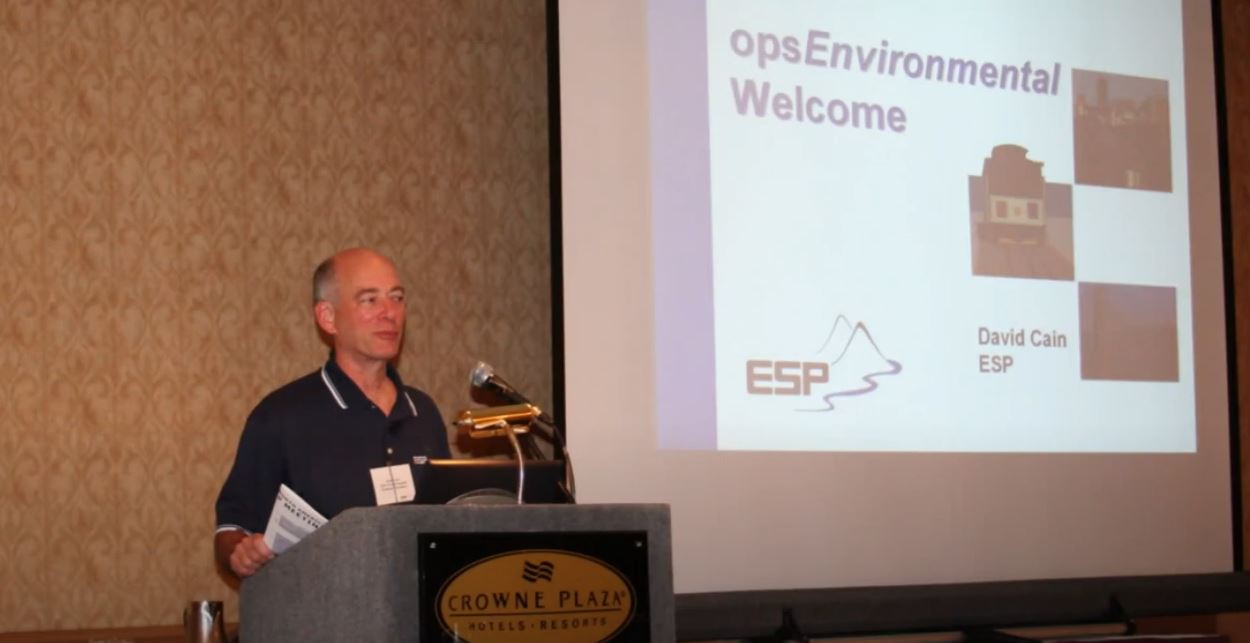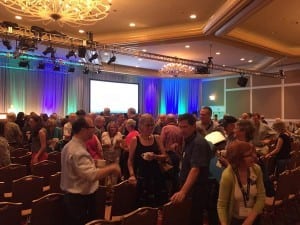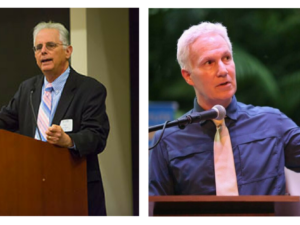By Katie Zakrzewski
As CCL sets out with an expanded policy agenda, one of our focuses this year is to expand our volunteer base as well. This is done through carefully planned outreach, and a crucial component of that outreach is presentations.
CCLer David Cain is one of the co-leaders of the Presenters and Schedulers Action Team. With a background in engineering in Silicon Valley, it’s safe to say that David is an innovator, and his CCL work is no exception. David has volunteered with CCL since 2014, and shares that his effort to make a difference caught the attention of CCL’s Senior Director of Programs Elli Sparks.
“If you volunteer and put in a little work, that gets recognized right away, and that opens the door,” David said.
When Elli coaxed David to get out of his comfort zone, he took her up on the challenge and got involved in scheduling presentations.
“Scheduling is the process by which you work for members in your chapter and get presentations set up for them. One of the side benefits is that I can watch and observe other presenters,” David said.
As David watched presentations, he was naturally curious about the different ways to effectively communicate CCL’s mission, and began to suggest tweaks and changes.
“Lots of folks at CCL are what I consider to be ‘inside the beltway’ — they’re worried about members of Congress and D.C. And while that’s important, what’s also important is how we reach out and engage with everyday people,” David said. “We can’t use an ‘inside the beltway’ approach to engage with people at the grassroots level.”
As David did research on ways to tweak presentations for groups of everyday people, he realized that solely presenting the facts was not enough.
“Just trying to educate people about climate change and hoping they’ll be spurred to action is not very effective. Just presenting facts, figures, and charts isn’t effective. People will listen, but they won’t be moved.”
David’s epiphany came after giving his own presentation for a local organization.
“At first, I thought it went really well. It was a classic situation of educating them with the facts and figuring that they would make the decision to join CCL. A really nice elderly lady came up to me afterward and said, ‘I just really loved your presentation. It was so interesting. Keep it up.’ She walked out the door, and I never saw her again. And that, to me, meant that I wasn’t engaging people enough to really get involved or even lift a finger.”
David realized that while he had fun conducting climate change presentations, CCL wasn’t benefiting. He suspected the missing element was the impact that emotions and social connections have in communicating about climate change.
“It’s not the physical science that’s critically important — it’s the social psychology. And considering the degree to which CCL masters and uses social psychology in conjunction with what scientists and researchers are doing, we can be more effective in achieving political will if we include both in our presentations. People don’t just sit around and think about climate change. It’s an emotional thing. It’s scary. There’s a certain resistance to acknowledging climate change, and that’s a symptom of the existential impact.”
David’s solution was to modify presentations to acknowledge fear and worry, and then offer hope through motivational presenting.
“A majority of people at the grassroots level, like me, can feel it down to the bone that they know something is wrong — that there’s a mental anxiety about climate change. Through motivational presenting, we try to move people to take action that’s aligned with what CCL is doing and move past all of those emotional barriers.”
Motivational presenting, which is similar to motivational interviewing, operates through the acronym OARS.
Open-ended questions
Affirmation when someone says something
Reflective listening
Summary
Traditionally, presenters may have slides that they’re reading and trying to memorize. Audience members pick up on this, and struggle to connect. But when you start telling people your story, David shares, your passion shines through, and you’re able to establish a connection.
“There’s this thing called flow, and flow is when you and the audience come together. Once you know that they’re with you and they’re engaged, it’s intoxicating. The trick is to harness that. You’re not reading your slides. Your slides are supporting your story.”
Below is David’s personal story that he shares with his audience.
As you share your story with your audience, David says it’s important to let them know that you’re just like them. You’re not a scientist or a diplomat, but an everyday citizen sharing their concerns and showing your passion.
“When I talk about my passions, I share with my audience the opportunities that you have as a volunteer in CCL. The more you hang out with us and go to D.C. and do different things, your story becomes more interesting. Everyone has a unique and powerful story, and empathy flows through you and your audience. That gets everyone connected. They’re interested to hear more about what a climate advocate is.”
Throughout the course of a presentation, after sharing his passion and making a connection with his audience, David indicates that climate change is real, and he accepts it. He invites the audience to as well.
At this point, David introduces the pivot. This pivot is grounded in hope.
“The pivot point is like an arc. At this point, I’ll say something like, ‘We can do something about it; we can make a difference,’ and I’ll give an example of how CCL has moved the needle on climate change.”
Then, David reinforces agency in the members of his audience.
“Agency, then, is that there’s something the audience can do to move the needle, too. Just calling your member of Congress doesn’t cost anything, and you’re entitled to ask your member of Congress that works for you about the climate. The process of giving your audience members agency is important.”
Another important and simple first step that David tells audience members they can take before leaving is filling out his sign-up sheet to join CCL.
“At the end of the CCL presentation, you’re supposed to have a call to action, but the smorgasbord approach doesn’t work. Give them one specific action that you know they can do. One of the easiest ones is to join CCL or become a Friend of CCL.”
Toward the end of his presentation, David shifts to having a dialogue. This, he says, has a deeper impact than a Q and A alone.
“Social science suggests that audience members talking and listening to other members of the audience is super powerful. Traditionally people give facts and figures and ask for questions, and that’s not enough. You have to have a discussion facilitated by the presenter. A third of your presentation should be discussion. You may not think anything’s happening, but when you challenge the audience a little and pull people into the dialogue, that’s when motivation happens.”
David shares that as a mentor and a coach, and as someone who is experienced with presentations, he enjoys helping other presenters become comfortable and confident. This could mean helping presenters overcome fear and insecurity so that anyone can present to a group about their passions and work within CCL.
“I think one of the challenges that every presenter faces is imposter syndrome. We think, ‘Little ole me? Standing in front of people talking about climate change?’ Well, I’m not an expert, and you don’t have to be, either.”
David said that he’s utilizing different mechanisms for getting feedback and improving, as well as seeing how impactful the Action Team’s presentations are.
“During the pandemic, we utilized Zoom. Zoom has polling functions, so we started doing a ‘before’ poll and an ‘after’ poll. The catch is that it’s the same poll. And throughout the presentation, you see a shift in thought, and the poll results reflect that shift. And then each time we present, we try to do it better and better.”
And on his priority list for the future is crafting a conservative version of outreach presentations.
“I’ll be starting this same process from scratch, so we can present to and engage conservatives with the new and expanded CCL policy focus,” David said.
As CCL focuses on bringing more folks into the climate movement, David challenges all volunteers to get out of their comfort zone to think about how they can engage folks in their community to create the political will for a livable world.
David concludes: “Every CCLer has the potential to be a great presenter. I don’t mean this merely in terms of grassroots outreach, but for any aspect of our advocacy, because any time you interact with more than one person, you are presenting to an audience. And your personal story, experience in CCL, and your passion for making a difference can win over any audience. Let me show you how.”
Check out the Presenters and Schedulers Action Team here, and check out Citizens’ Climate Radio Ep. 79 to learn more about crafting your personal climate story.






